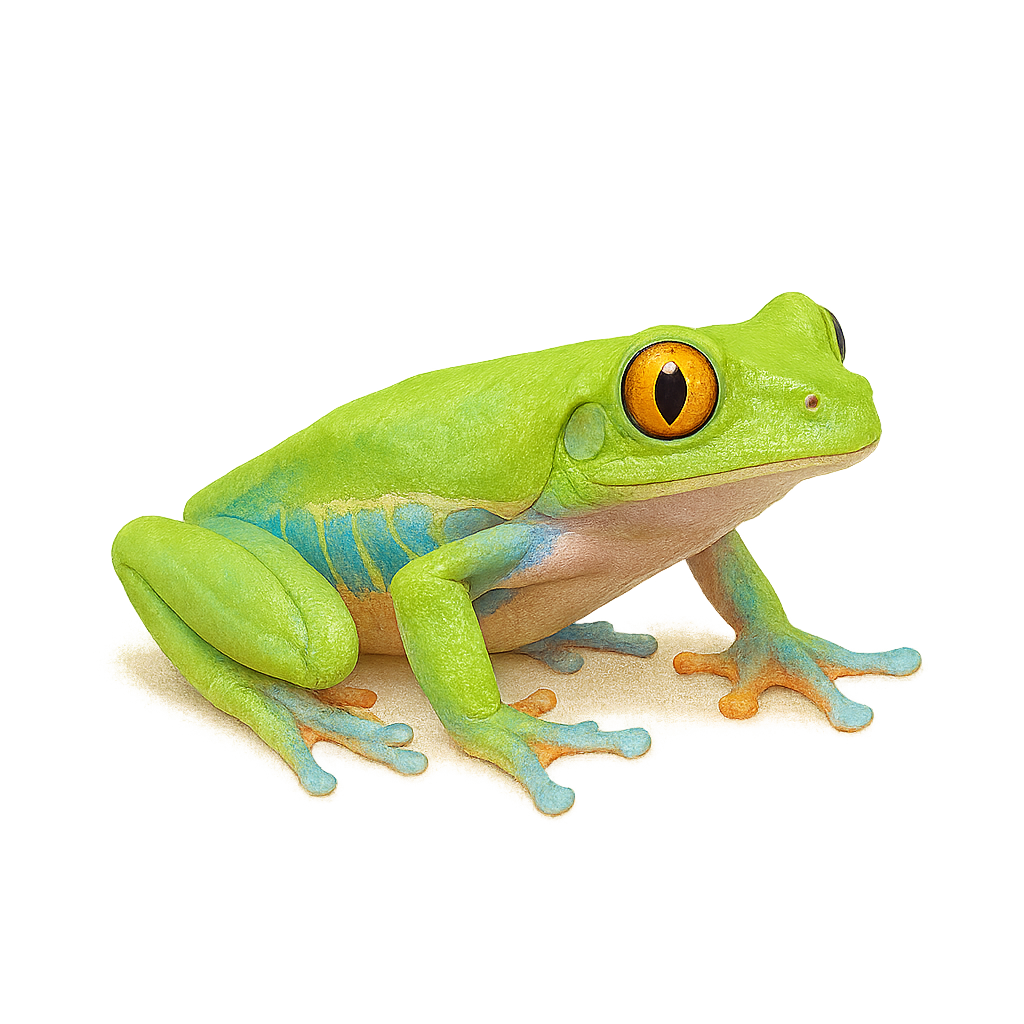Your wildlife photography guide.
Explore the blue-sided treefrog in detail, study its behavior, prepare your shots.
Where to observe and photograph the blue-sided treefrog in the wild
Learn where and when to spot the blue-sided treefrog in the wild, how to identify the species based on distinctive features, and what natural environments it inhabits. The WildlifePhotographer app offers tailored photography tips that reflect the blue-sided treefrog’s behavior, helping you capture better wildlife images. Explore the full species profile for key information including description, habitat, active periods, and approach techniques.
Blue-sided Treefrog
Scientific name: Agalychnis annae

IUCN Status: Endangered
Family: HYLIDAE
Group: Amphibians
Sensitivity to human approach: Suspicious
Minimum approach distance: 2 m
Reproduction period: May to August
Incubation: 6–10 jours
Births: May to September
Habitat:
humid tropical forests, riparian zones
Activity period :
Mainly active at night, generally discreet during the day.
Identification and description:
The Blue-sided Treefrog, or Agalychnis annae, is a tree-dwelling frog species native to the humid tropical forests of Costa Rica. It is easily recognizable by its bright red eyes, vivid green body, and blue sides. This frog is primarily nocturnal, resting on leaves during the day. It plays a crucial role in the ecosystem as an insect predator. Unfortunately, it is threatened by deforestation and habitat loss. Conservation efforts are essential to ensure its survival. Its thin, permeable skin makes it sensitive to environmental changes, making it an important indicator of habitat health.
Recommended lens:
Macro – adjust based on distance, desired framing (portrait or habitat), and approach conditions.
Photography tips:
To photograph the Blue-sided Treefrog, it is advisable to use a macro lens to capture the details of its red eyes and colorful skin. Night photography with soft lighting can reveal its nocturnal beauty. Be patient and wait for it to settle on a leaf for a good angle. Avoid using direct flash to prevent stressing the animal. Use a tripod for stable shots and play with depth of field to make the subject stand out against a blurred background.
The WildlifePhotographer App is coming soon!
Be the first to explore the best nature spots, track rutting seasons, log your observations, and observe more wildlife.
Already 1 432 wildlife lovers subscribed worldwide

